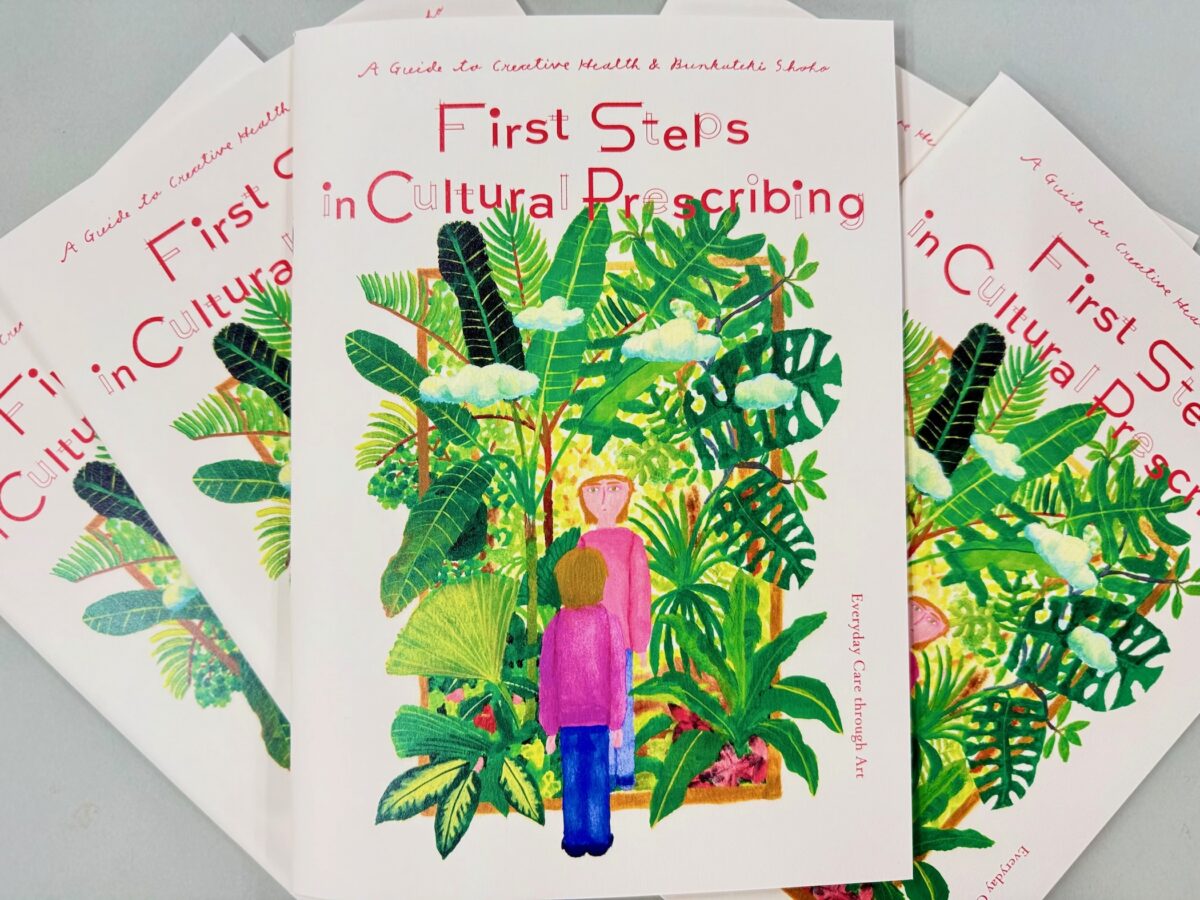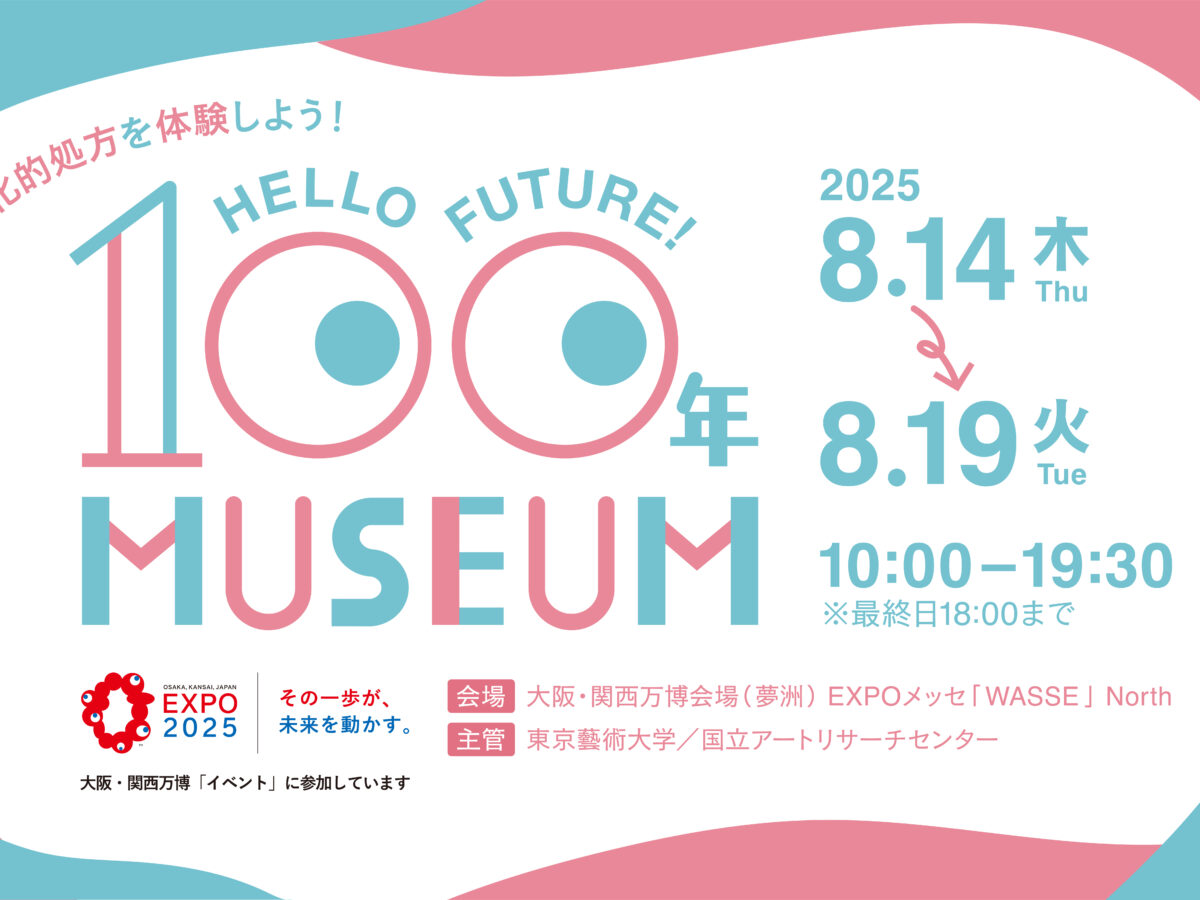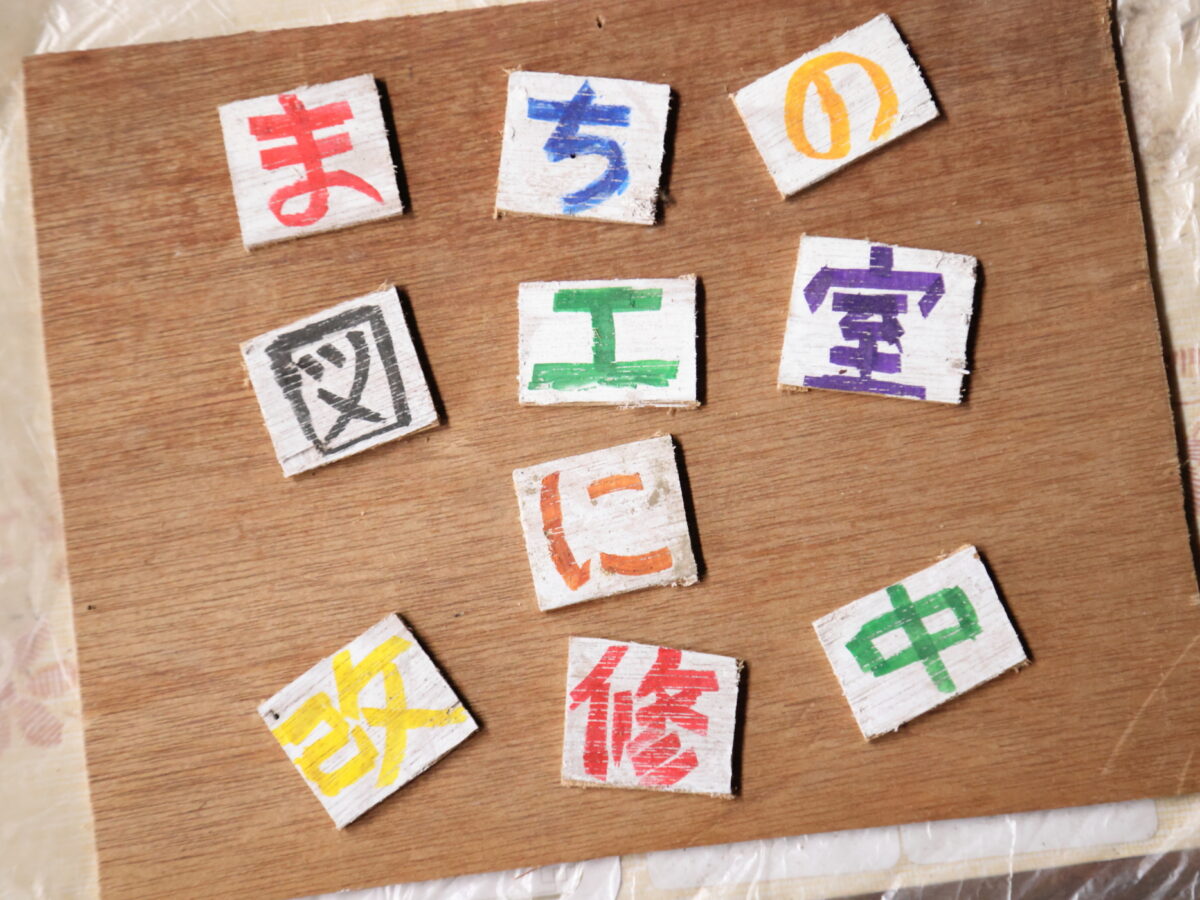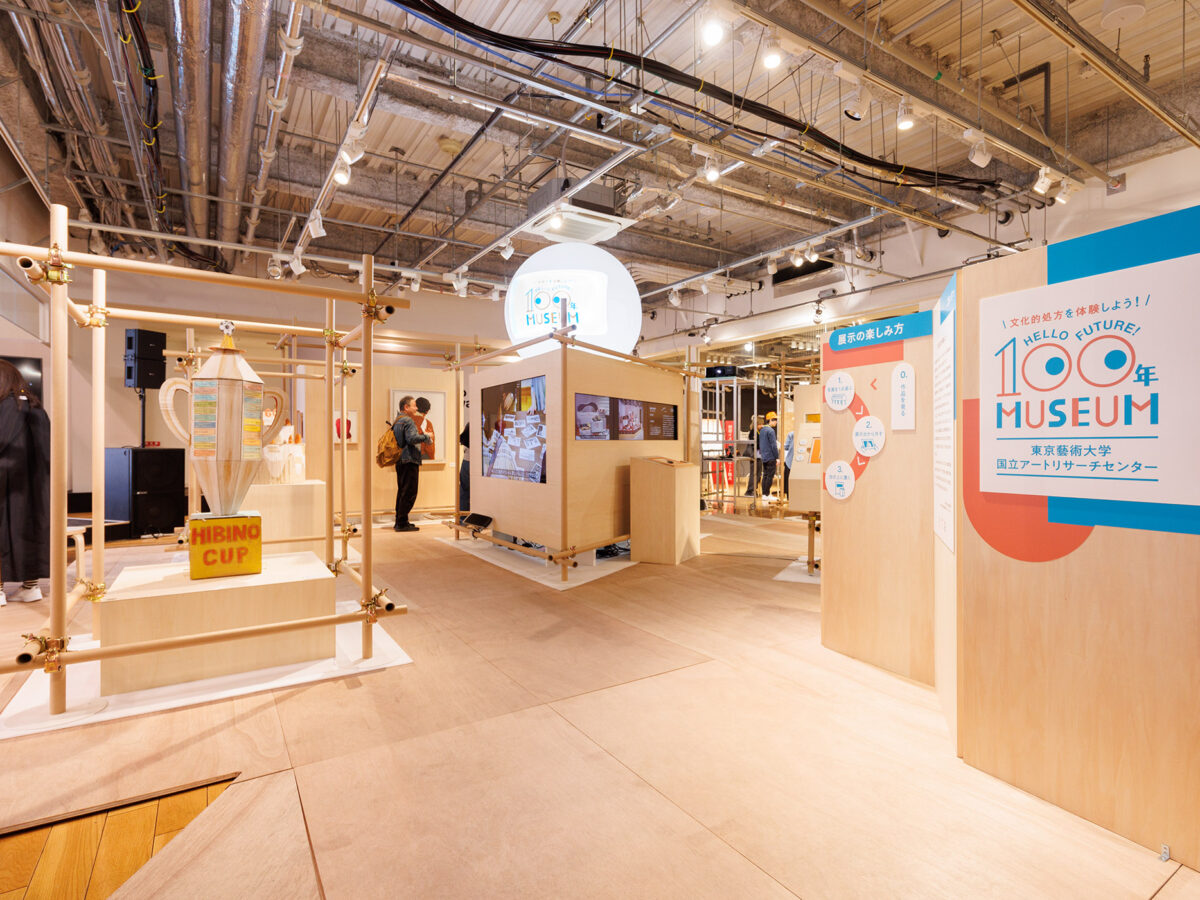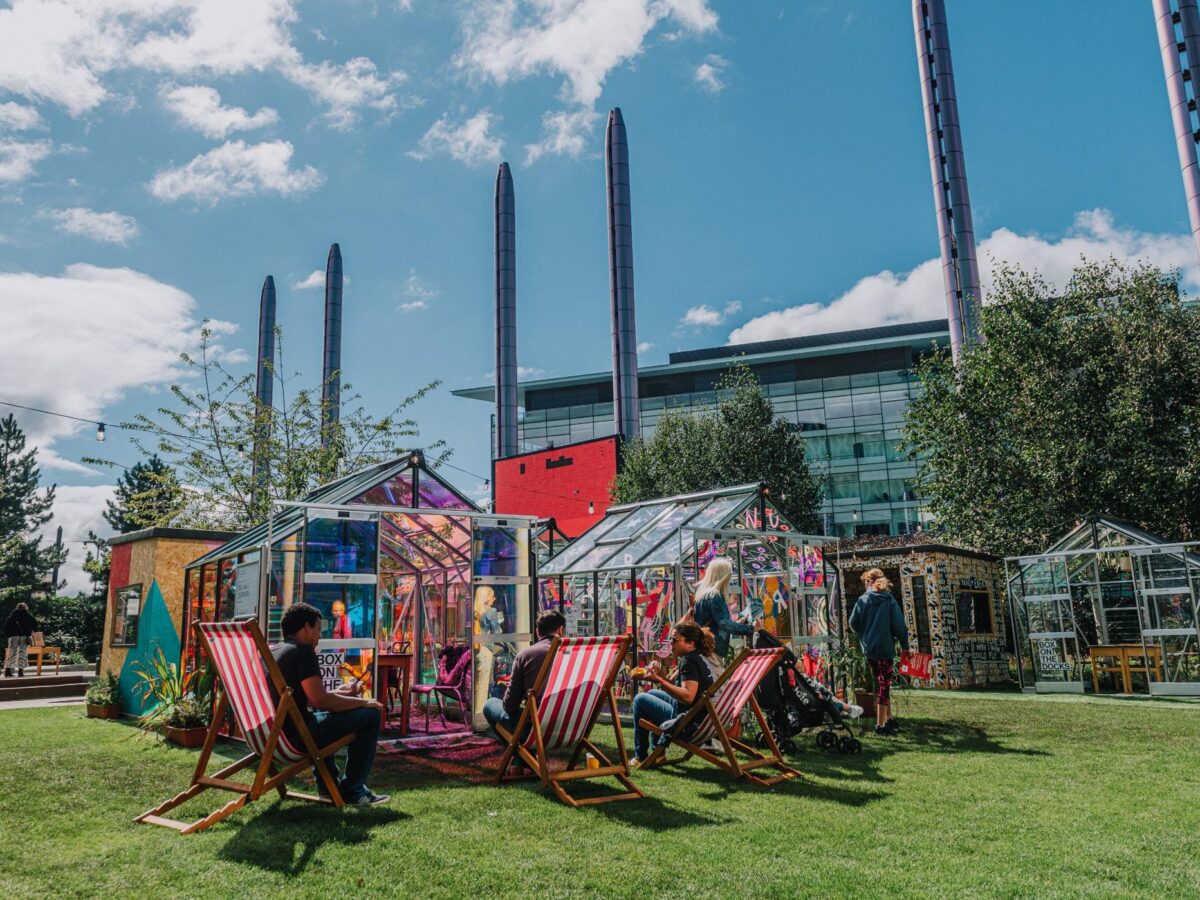
目次
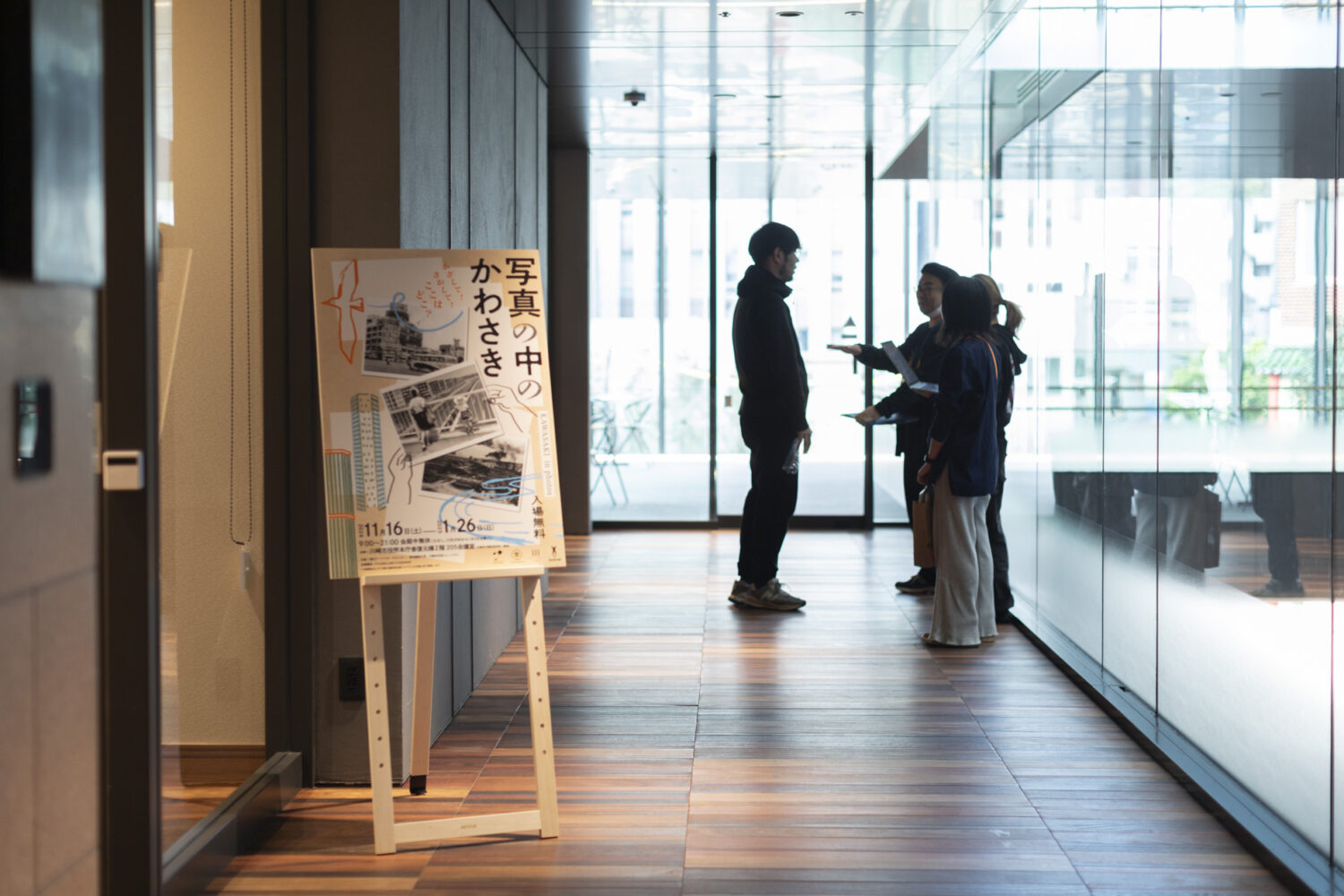
Local photography exhibitions can become valuable archives that document the history and daily life of a town. Depending on the exhibition method, it is even possible for visitors to experience “entering” into the photo itself.
“KAWASAKI in photos” (organized by the National Center for Art Research, Tokyo University of the Arts, and Kawasaki City Museum) is held in the Kawasaki City Hall main building reconstruction room #205 until January 26, 2025. It displays photos selected from those submitted to open-call photo competitions from 1957 onward. While typical photo exhibitions often feature framed photos hung on walls, this exhibition adopts a different approach from conventional displays.
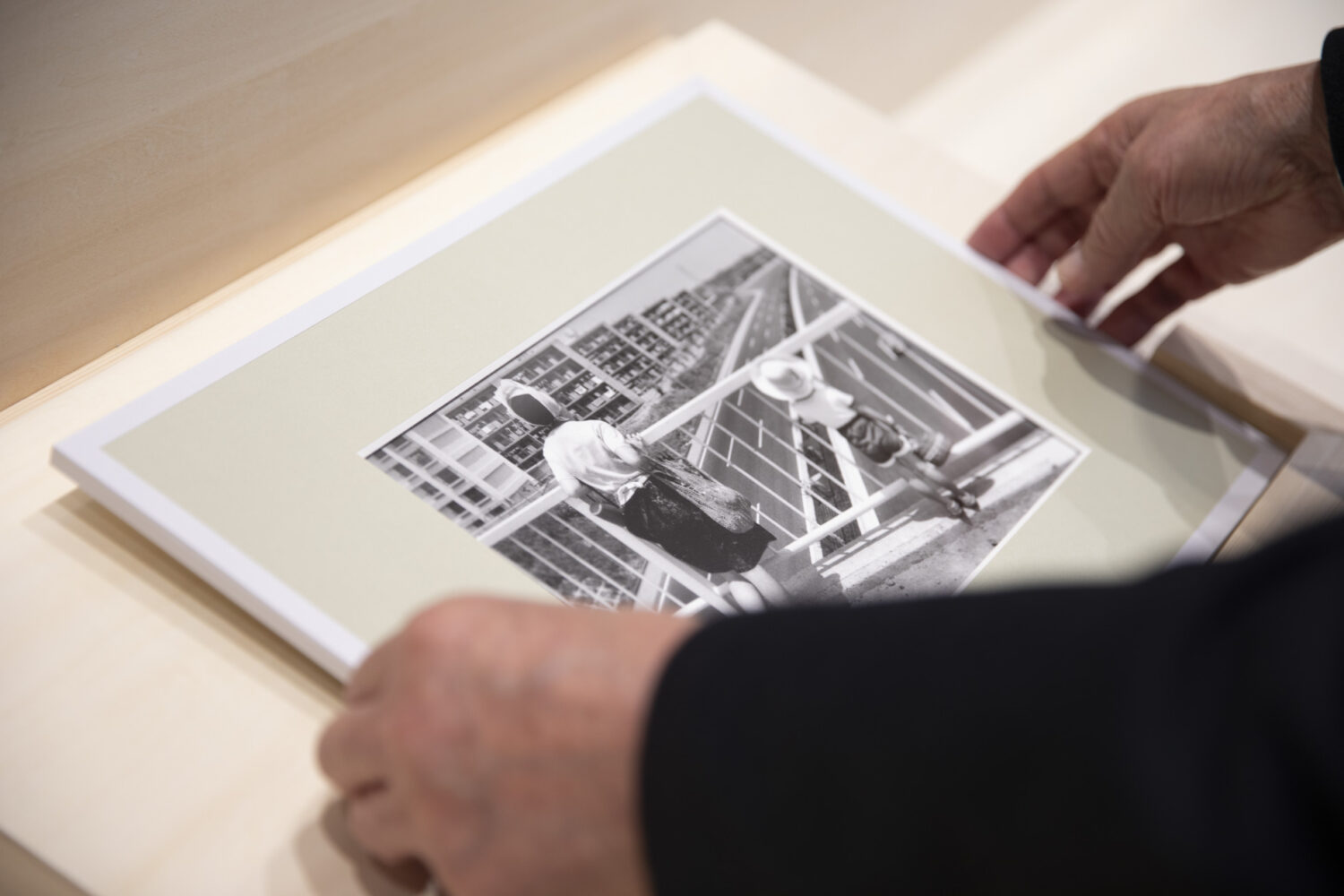
They exhibited 20 photo panels reprinted using the silver halide technique. These were award-winning works from Kawasaki City photo competitions in the 1960s. When visitors placed a photo panel on a special table created for this exhibition, the shooting location and related videos of the photos were displayed on monitors. Additionally, visitors could freely view 300 digitized photos on a large monitor.
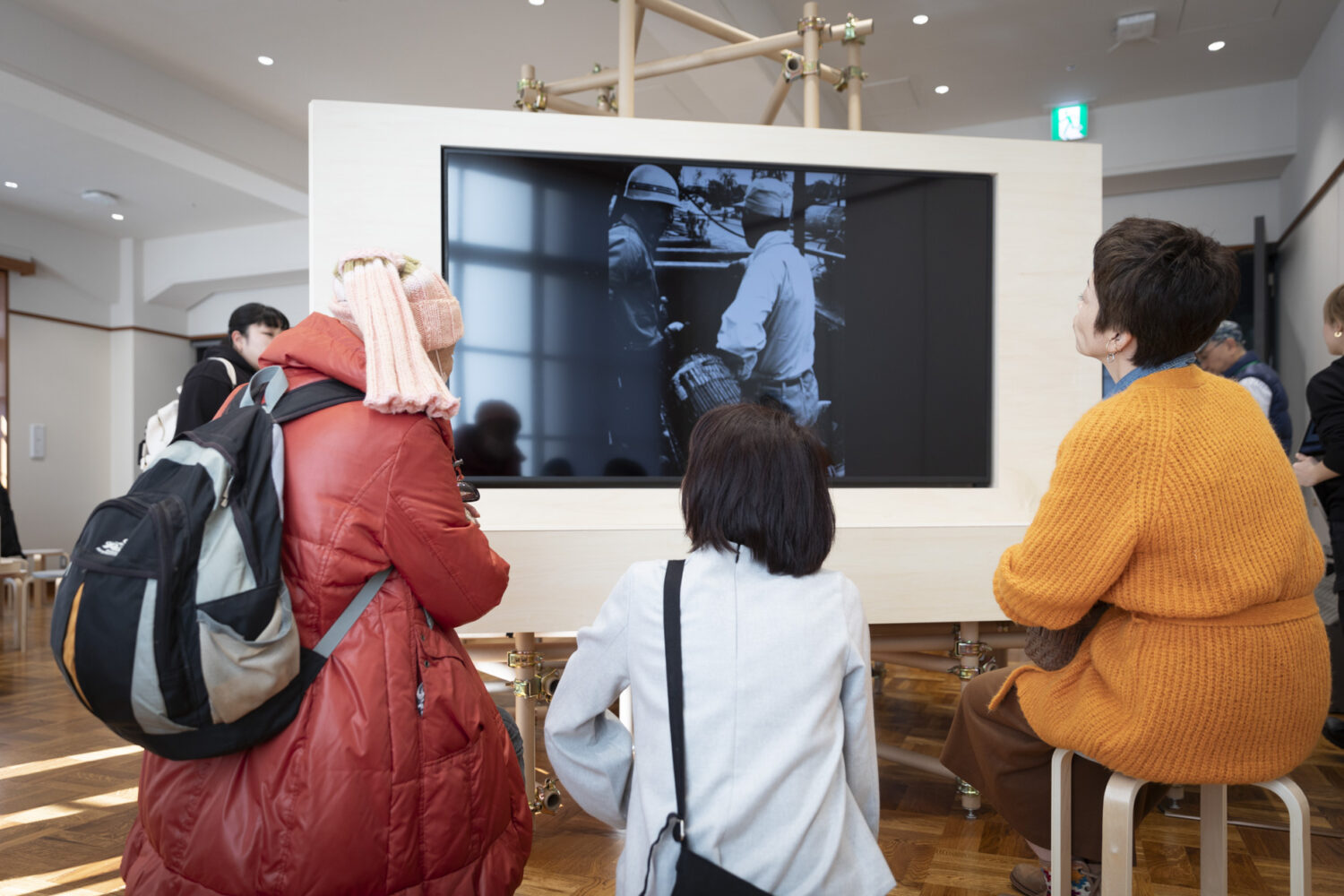
Some visitors were a little confused by the different style of presentation compared to standard exhibition formats. When a panel was placed on the stand, the photo was enlarged on the central monitor, and related video and photo data (such as title, photographer, year taken, camera information, etc.) were shown on the left and right monitors.
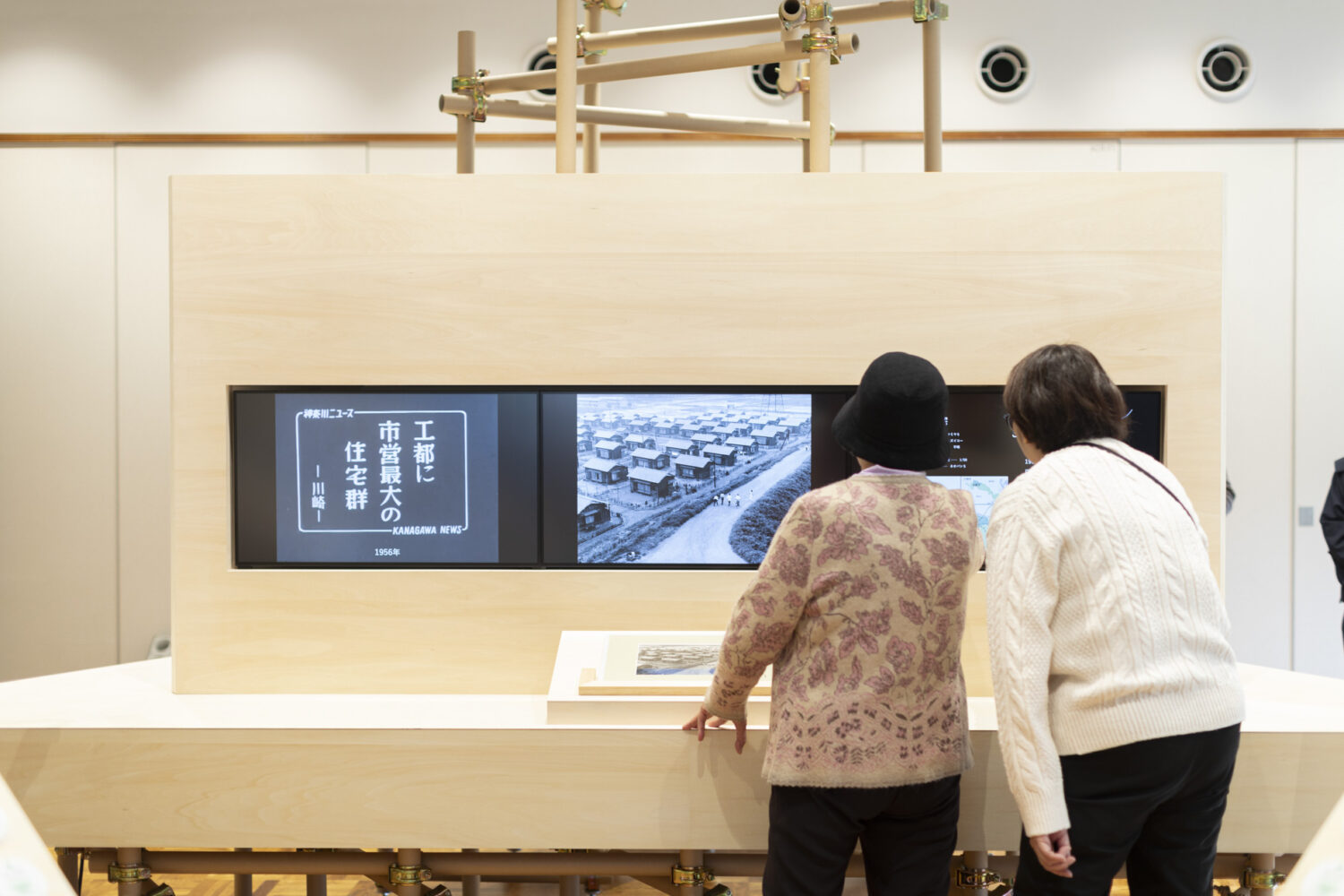
The combination of the photo with background information vividly revived visitors’ memories and sparked natural conversations among visitors, such as, “This is Kawasaki Station, right?” and, “It used to look like that!” The pairing of the photo with additional data brought memories to life, and some visitors began sharing stories from decades ago, like, “I shopped here once.”
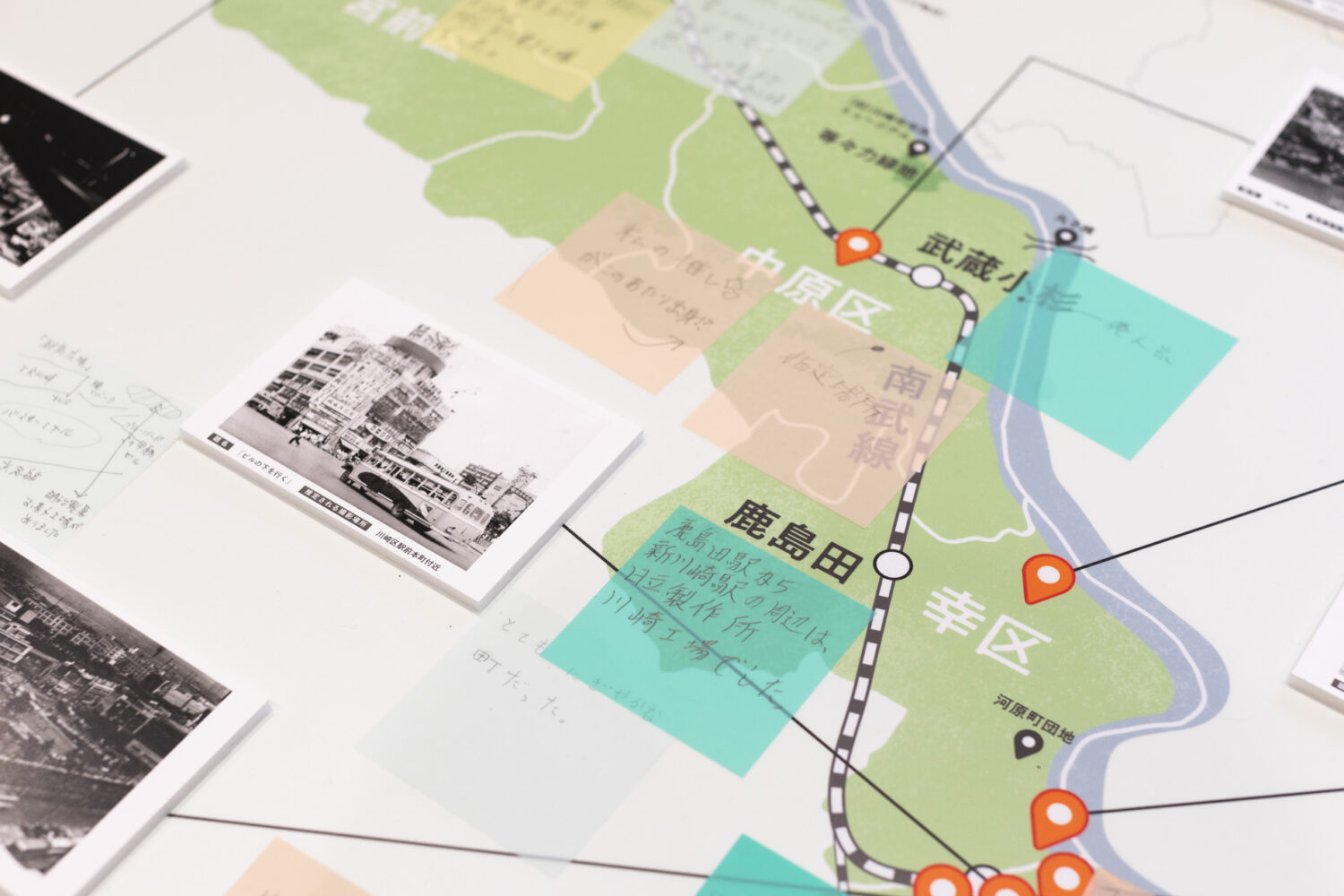
In addition, a map titled Kawasaki in Your Memory was placed in the exhibition space where visitors could write down their thoughts and memories freely. Notes such as, “I ate an American hotdog here,” “I used to visit the bowling alley often,” and “It used to be such a beautiful station!” were posted. It showed how the exhibition has come to serve as a shared space for personal memories and emotions.
MUSEUM TRIP: Let’s Travel into the Photos!
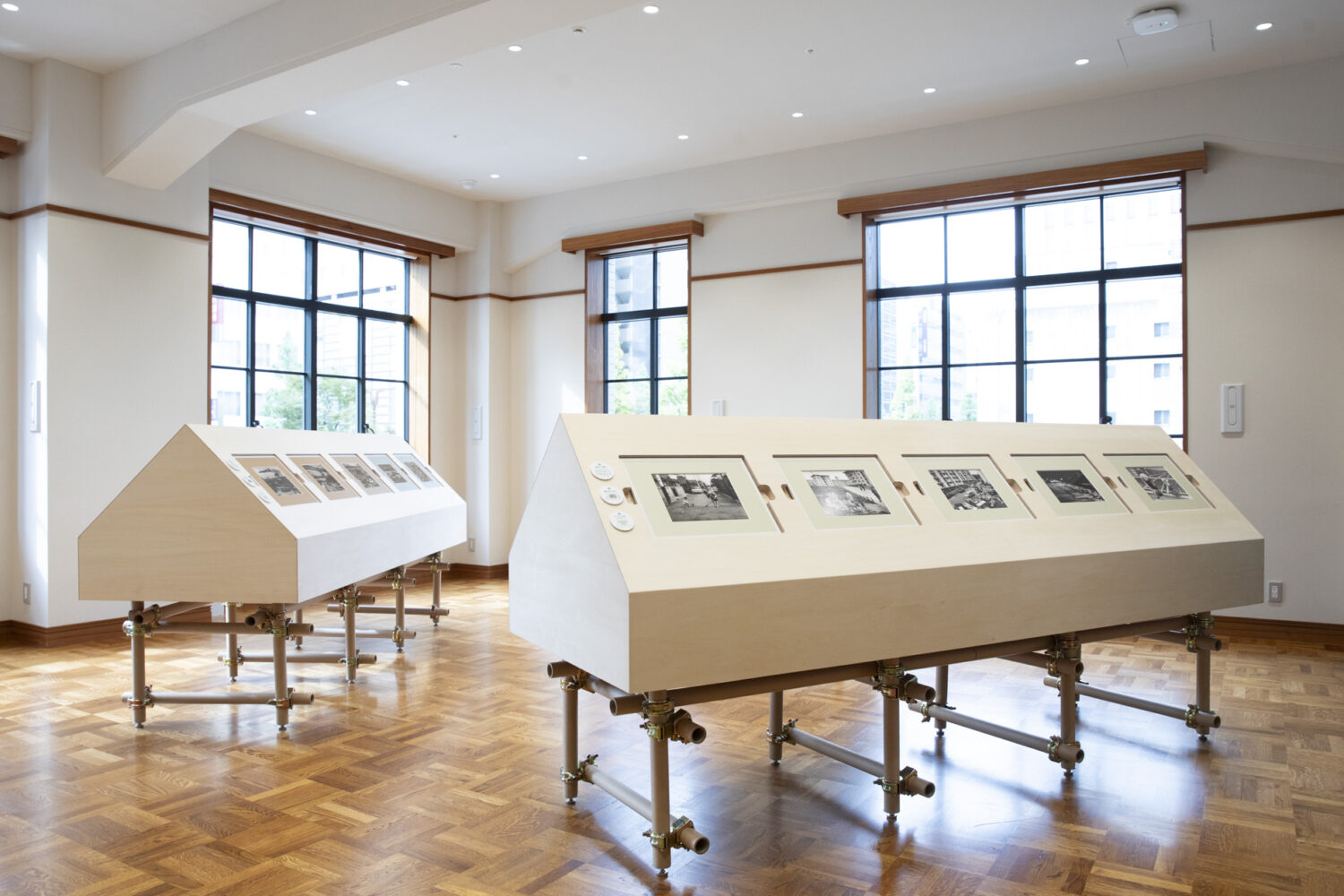
With this thoughtfully arranged exhibition space, “MUSEUM TRIP: Let’s Travel into the Photos!” events related to “KAWASAKI in photos” were held on November 16 and 23, 2024 (with four sessions in total, each with a maximum of 10 participants). During the event, participants could enjoy the exhibition while chatting with the art communicators known as Kotora1. It was also designed to be enjoyable for people living with dementia as well as their families to participate together.
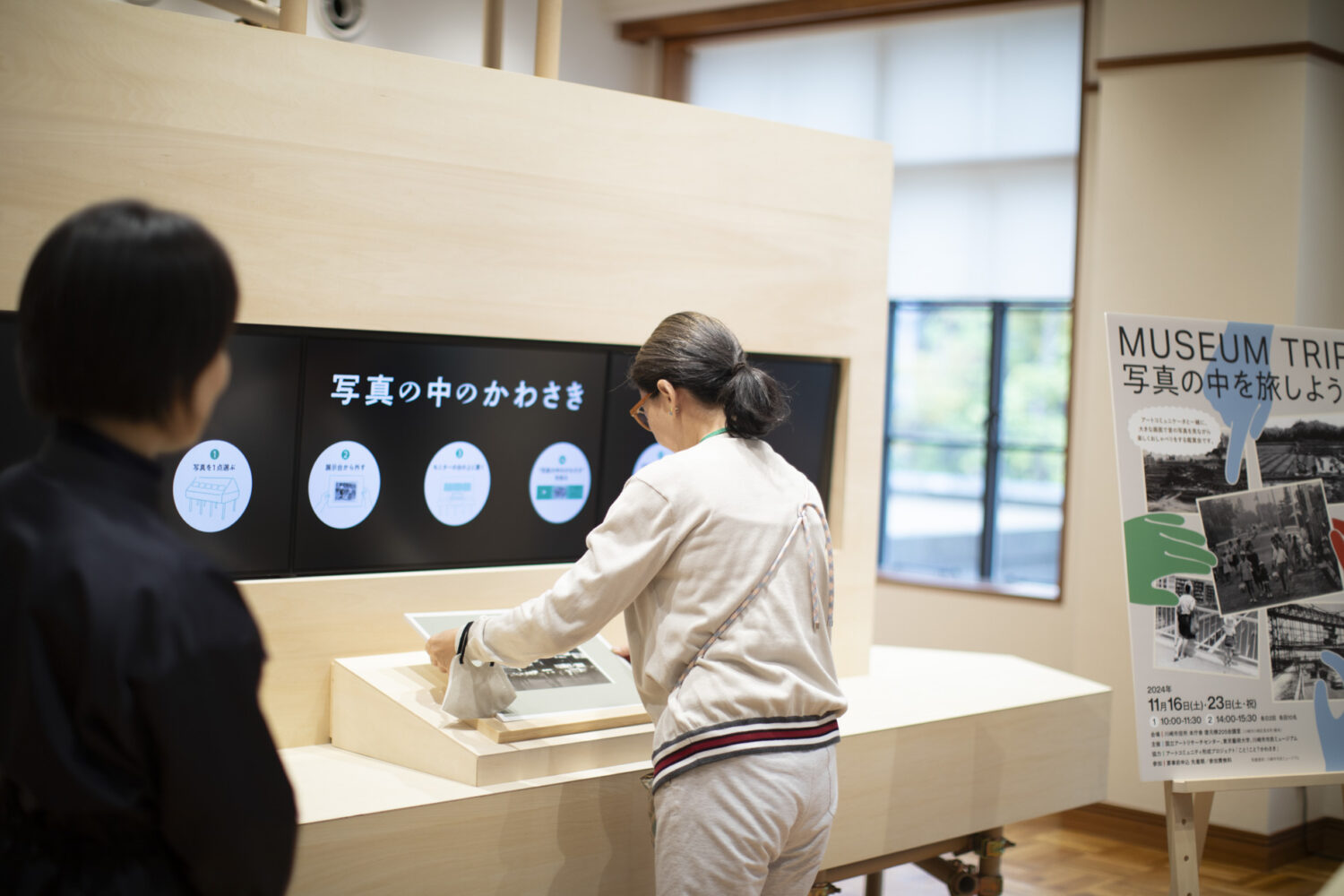
The event began with participants looking at the exhibition photos. “How nostalgic!” “Where is this?” “It looks like a different country!” Voices like these could be heard throughout the venue. Although it is the same town they live in now, the scenery from the 1960s felt very distant, like glimpses into another world.
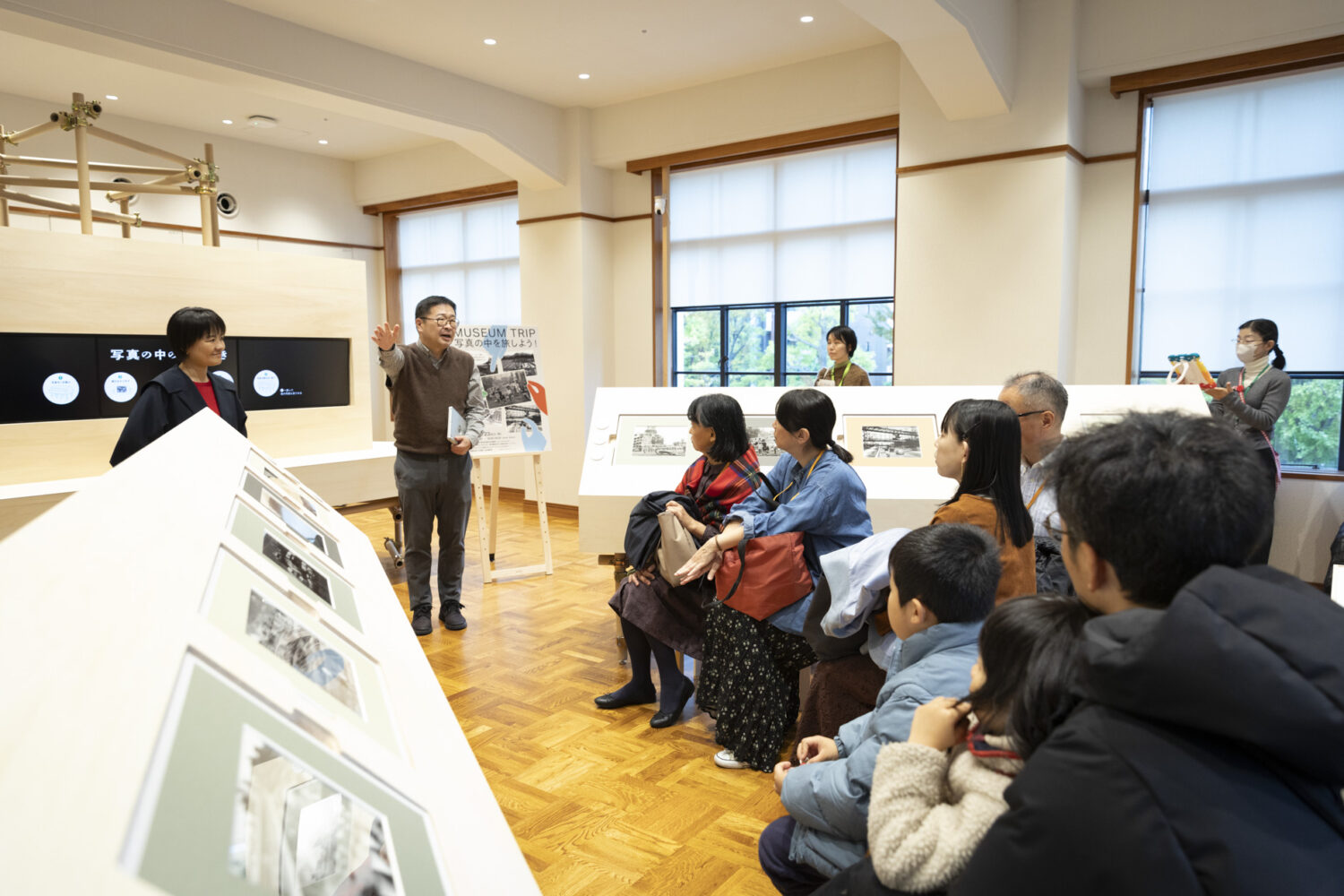
Afterwards, Dr. Yuichiro Suzuki, a curator from the Kawasaki City Museum, and Ms. Sawako Inaniwa from the National Center for Art Research gave an introduction to “MUSEUM TRIP: Let’s Travel in the Photos!” They explained the background of the photos, the changes Kawasaki underwent during industrialization and urbanization, and the process of digitizing the competition photos and replicating them using silver halide technology. Additionally, they explained the system whereby IC chips or NFC (Near Field Communication) were embedded in the photo panels to display related content.
The participants were impressed, saying, “I see, now I understand” and gained a deeper understanding of the exhibition’s purpose and background. After this introductory exchange, they moved to another room that had been prepared for a more in-depth appreciation of the photos with the Kotora.
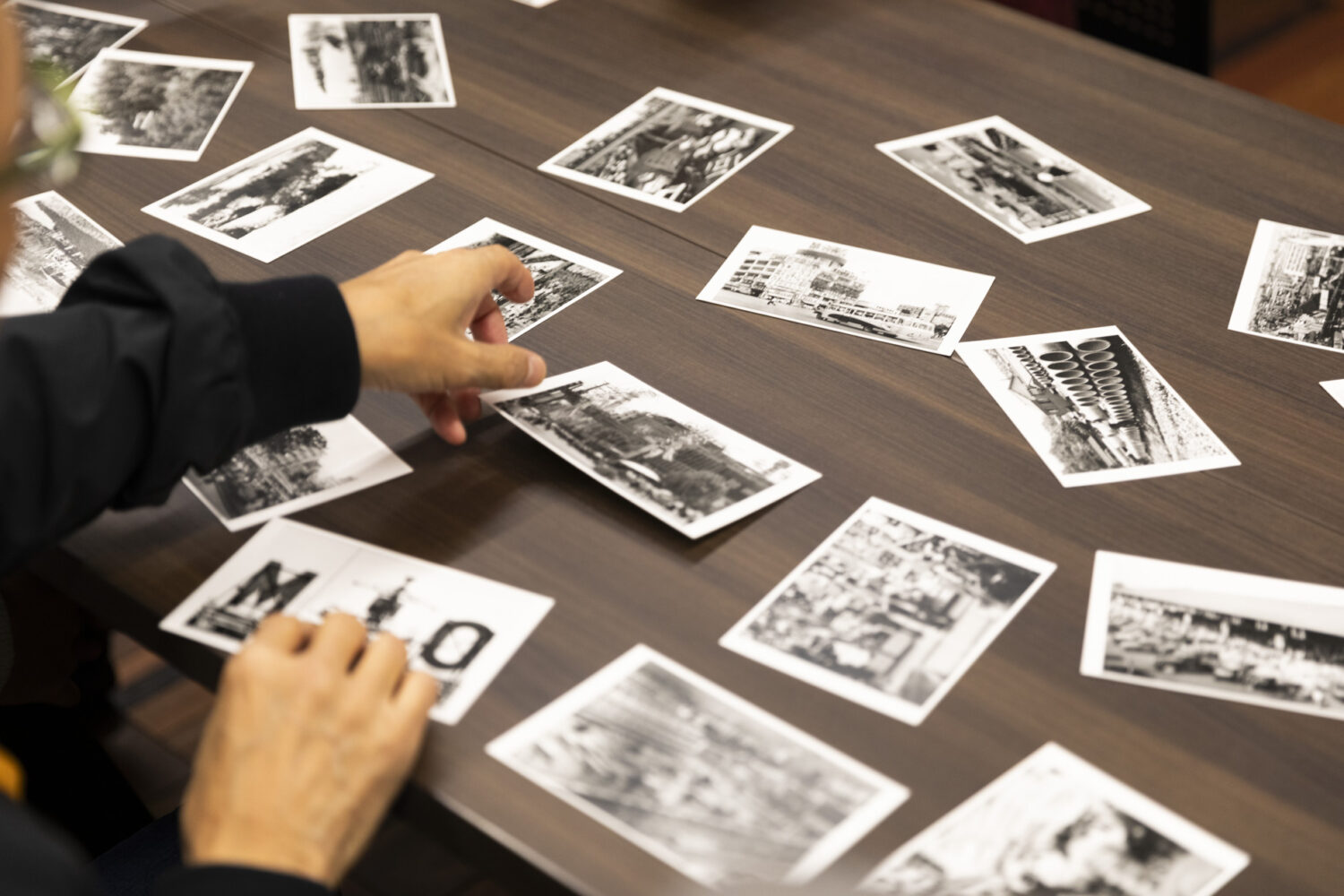
Divided into three groups, they took seats around tables sitting across from one another. The same photos displayed in the previous room were randomly placed on the tables. Before introducing themselves, the Kotora asked the participants, “Is there a photo you’d like to enter?” At first, the participants looked a bit confused.
“Enter the photo?”
“Which one do I want?”
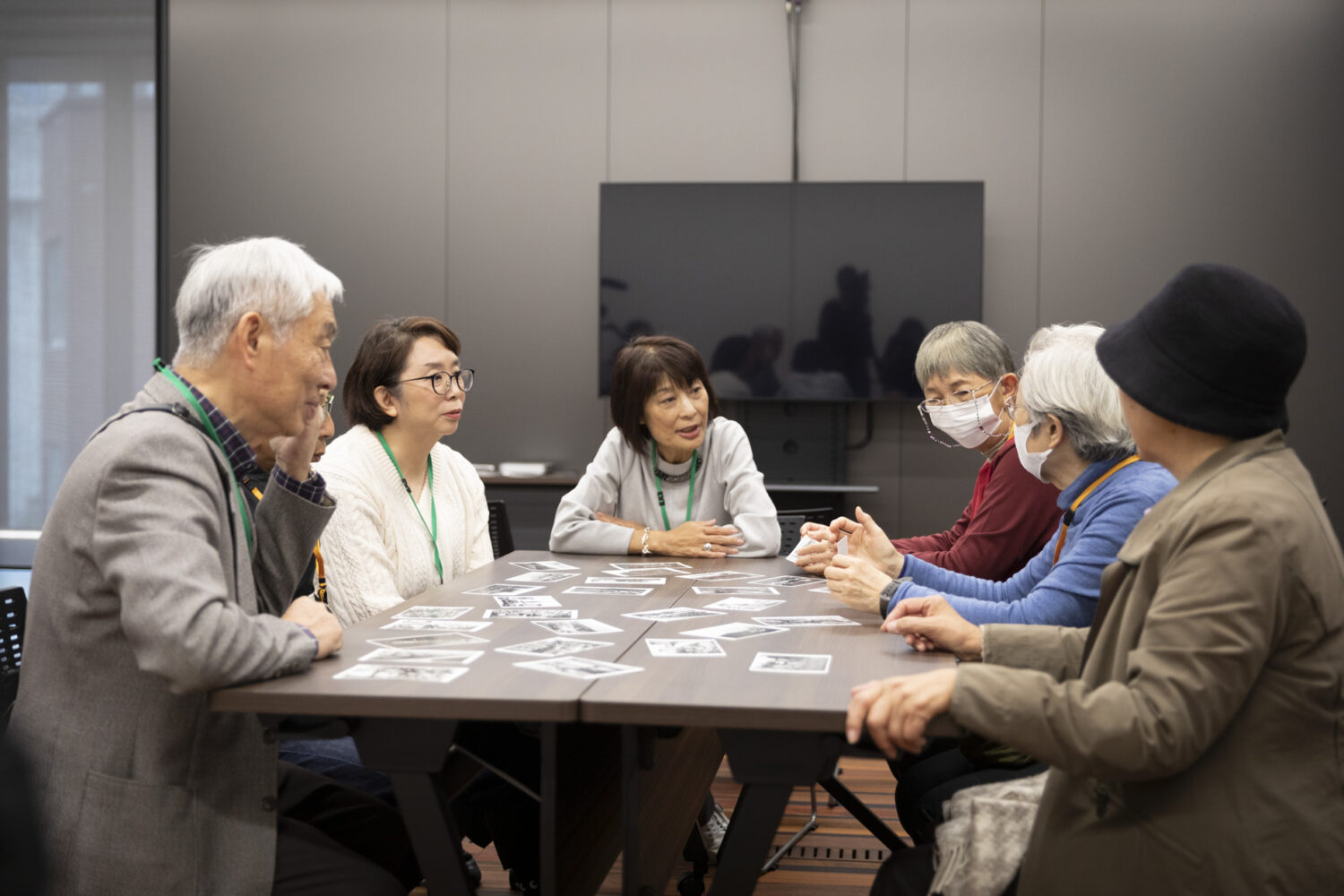
Though the question, “Which photo would you like to get into?” seemed a bit abstract, each participant began picking out a photo that caught their attention. After everyone had selected a photo, they started by introducing themselves while explaining why they chose that particular photo. Kotora continued to ask questions, drawing out comments from the participants. One person shared an anecdote: “In the 40s, during the Showa era (1965 to 1974) when I got married, the roads were not paved, and when we swept the alley, dust would rise.” Others nodded, acknowledging, “Yes, that’s how it was.”
Through talking about the reason they selected a particular photo, the common experiences and connections among the participants became apparent. What stood out most was that all the participants had a connection to Kawasaki. As Kotora’s gentle questioning progressed, the atmosphere relaxed, and the participants became more at ease with each other.
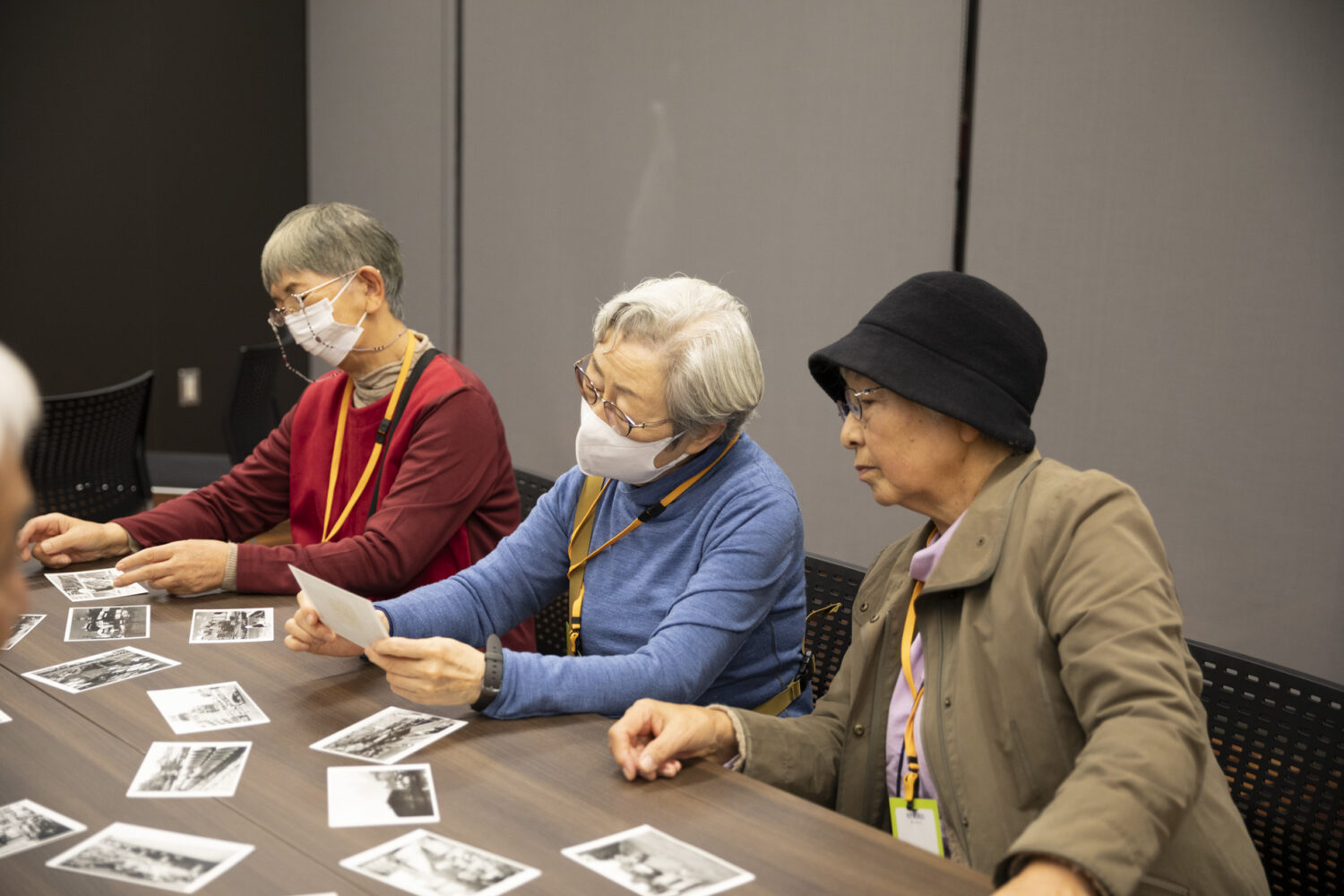
In the next session, the group spent about 15 minutes closely examining a single photo. Normally, we don’t take so much time to look at photos. What’s more, the photos shown this time were submitted by local citizens, and many had no personal link to the participants. However, taking the time to observe prompted new insights and emotions related to the photos.
The first photo shown on the monitor was one of two people observing the construction of a building. They looked like a mother and her daughter, or perhaps siblings.
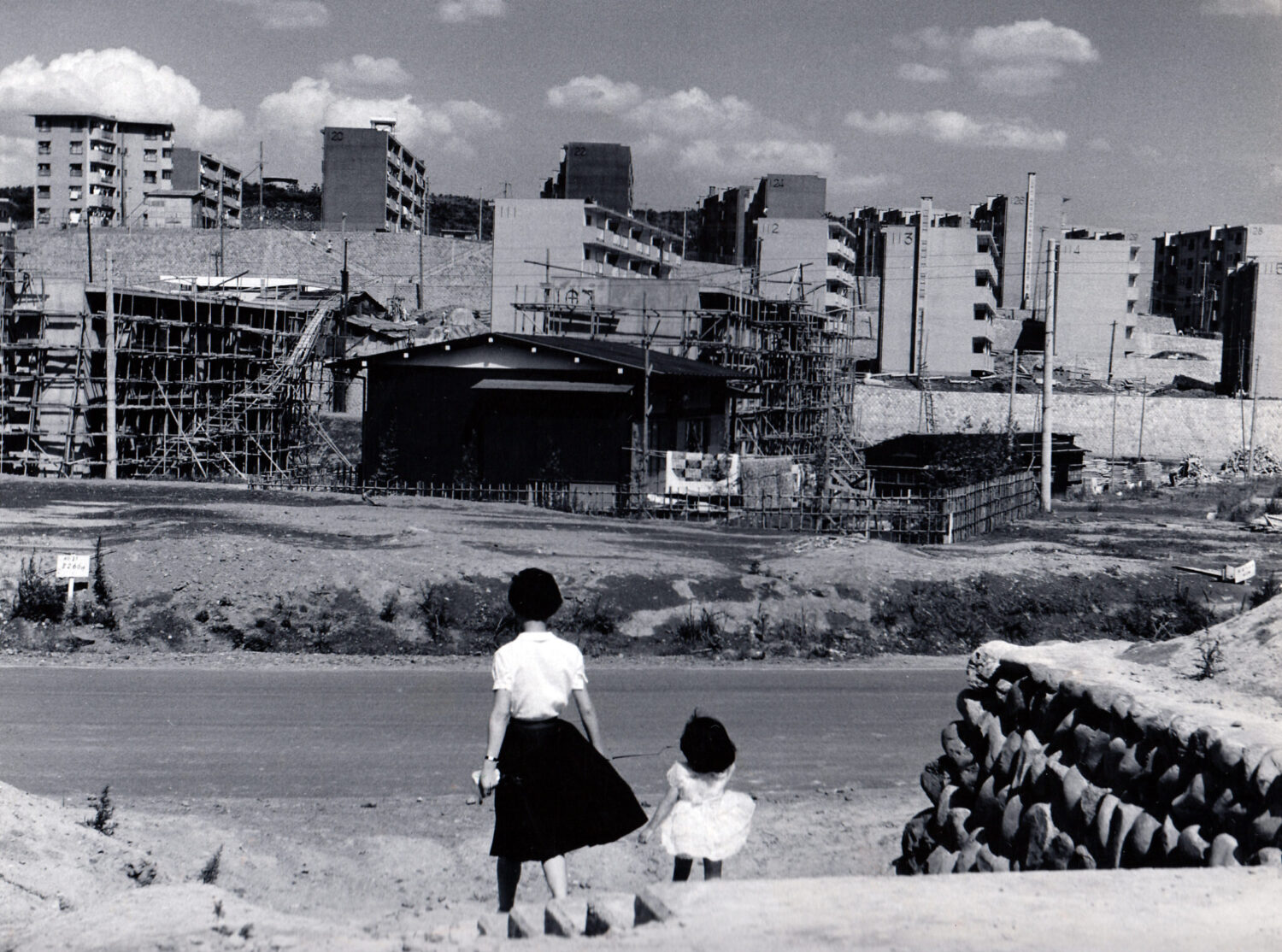
“Is this a Danchi housing complex?!”
“Are two children looking at it??”
“Hmm…maybe.”
In this session, the photo was displayed in its enlarged form, but no related information appeared on the screen, unlike in the previous gallery. Initially, the conversation didn’t take off very easily. However, the Kotora encouraged them, saying, “Feel free to share anything you notice or feel when looking at the photo..” This created an environment where participants could share thoughts without worrying about finding the “right” answer.
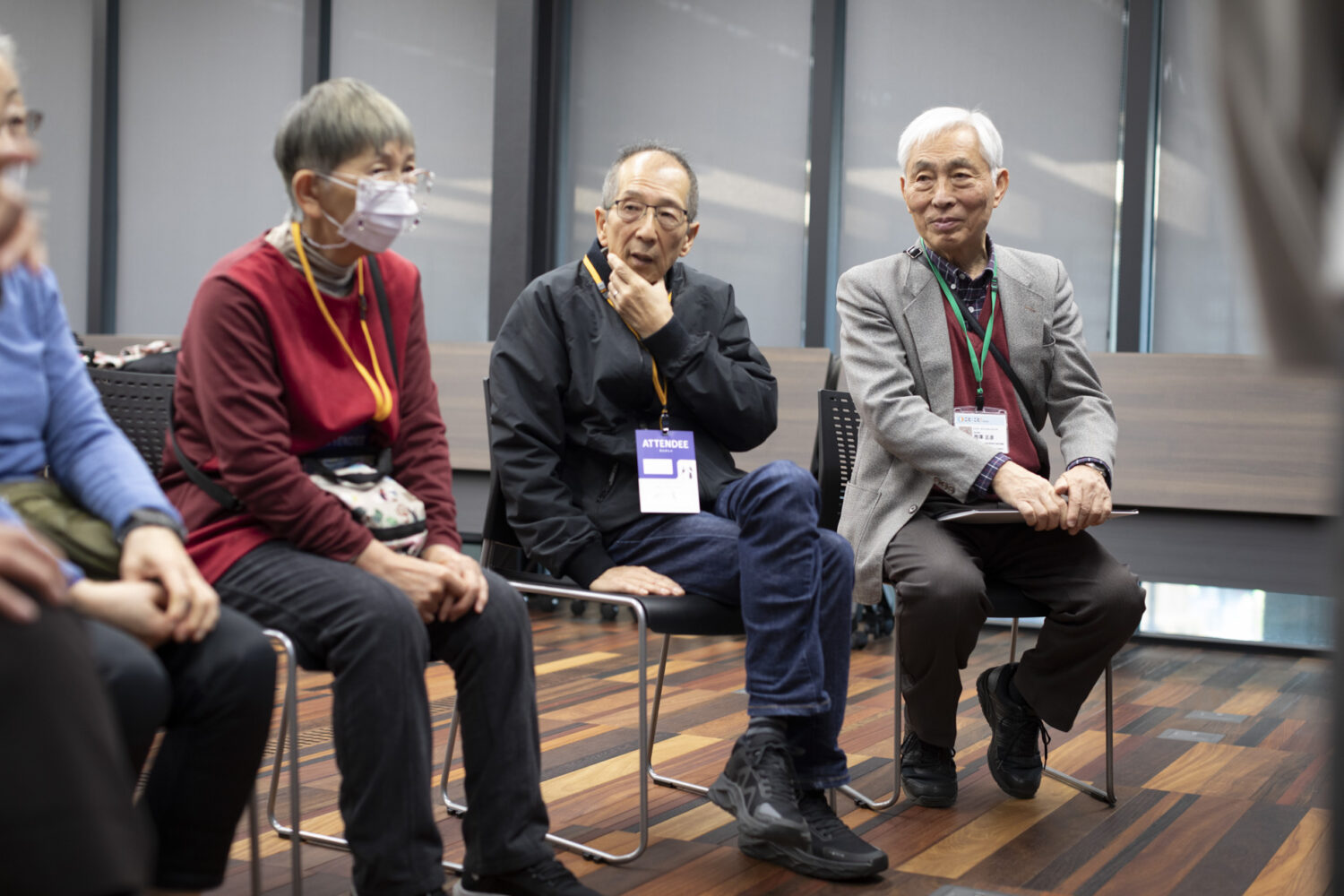
Hearing those words, one participant murmured, “I see some numbers… What are these? 8622? It could be the area identification number?” This comment attracted everyone’s attention, and soon many participants were standing up and moving closer to the screen to examine the details. “Now that the photo is enlarged, I’m noticing fine details I didn’t see before,” they observed, as the conversation began to flow more freely.

“The road is not paved. There’s no gutter.”
“The scaffolding looks like it’s made of wood.”
“Are these two people talking about how great it will be to move into the completed apartment?”
“I think this might be the mother and child.”
“Well, if so, the dad might have taken the picture.”
“There are no workers at the construction site.”
“Look, there are clothes hanging in the back. That building was probably finished.”
“I’ve never seen a scene like this, but it feels oddly nostalgic.”
“It feels like a happy moment.”
“I feel a little lonely when I look at this.”
Through these conversations, the participants began to share varied impressions of the photo. Some imagined the photographer’s intentions, others considered the feelings of the people in the photo, and still others connected the image to their own memories and experiences. What began as just looking at a photo evolved into deeper dialogues. Before they knew it, 15 minutes had passed, and the next photo appeared on the screen. This one showed a pool, but it was in a rather unusual location: right in front of a train station.
Everyone Naturally Entered the Photo
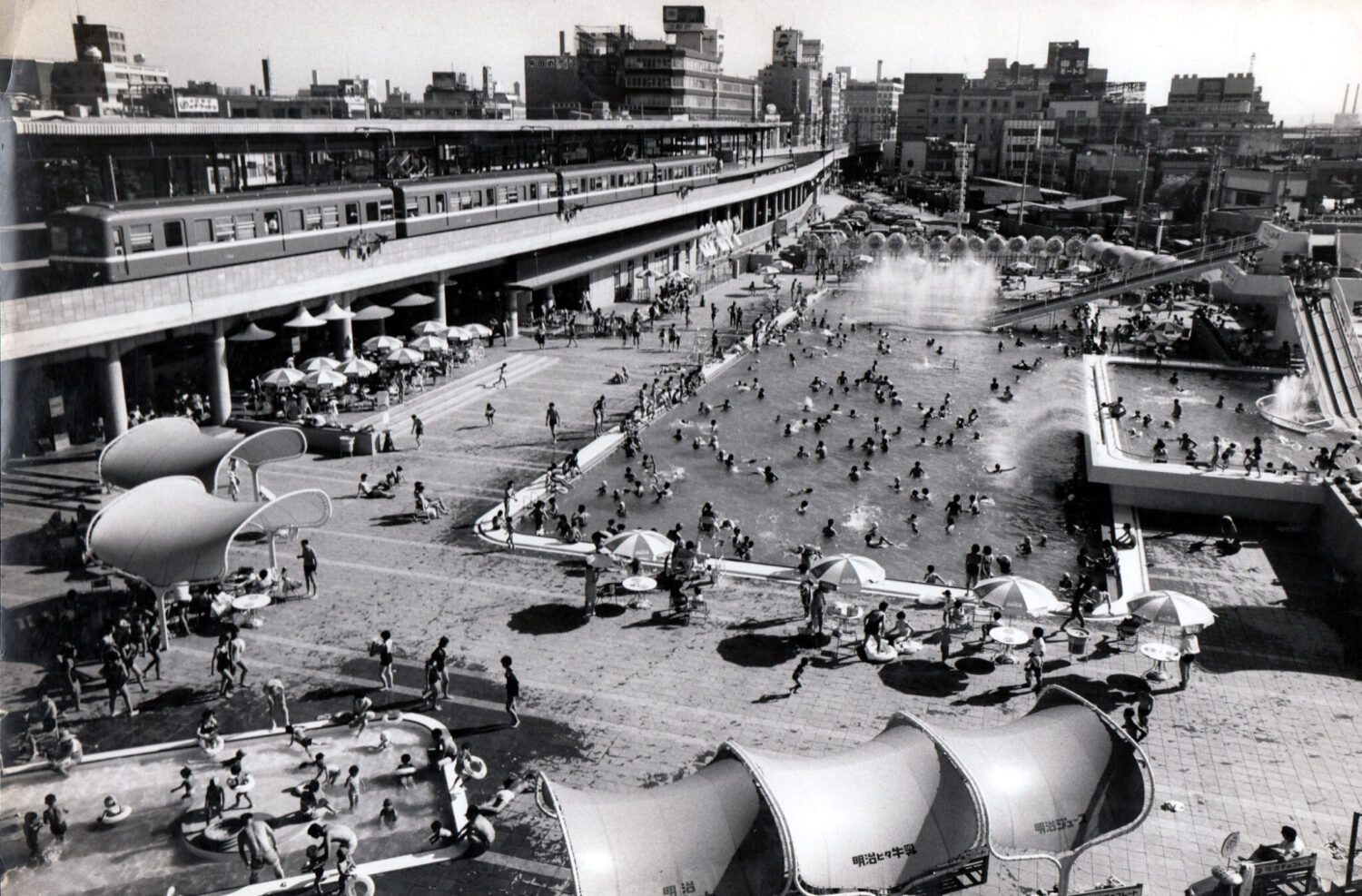
A pool in front of a station—quite an unusual sight. The participants began discussing the context. One person recognized the place immediately:
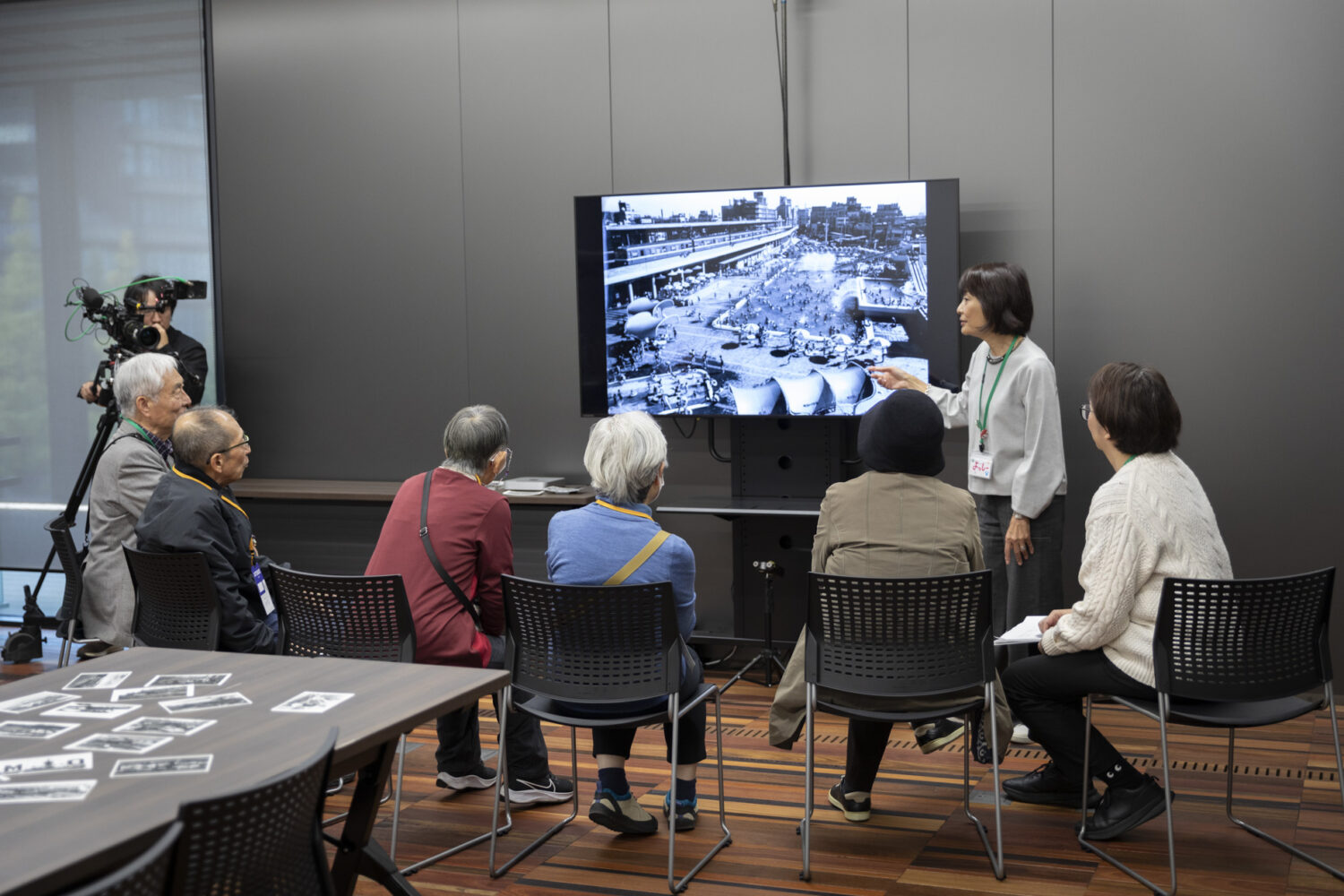
“Oh, this is Keikyū Kawasaki Station. You can tell by the shape of the train. I used to swim in this pool when I was a kid. I remember hearing Misora Hibari’s Makkana Taiyō (Bright Red Sun) playing.”
“The train windows are open. Back then, there was no air conditioning, so it must have been really hot and humid.”
“They’re probably peeking in and wishing they could swim! (laughing)”
“Look, there are flower wreaths on the poolside. This must have been right after it opened.”
“What did they do with this pool during the winter, I wonder?”
“I think it might have been a fishing pond.”
“Yeah, there used to be a lot of fishing ponds in the 40s Showa period.”
“Look, the parasol has a company name on it. I remember there was a factory there.”
Having warmed up with the previous photo of the Danchi housing complex, the conversation flowed easily. Remarkably, as they continued talking, it felt as though the participants were no longer just talking about the photo; the temperature, color, conversation, sounds, atmosphere, and smells came alive. Eventually, they had entered the scene and were experiencing the world of the photo through all their senses.
Appreciating Artworks with Art Communicators
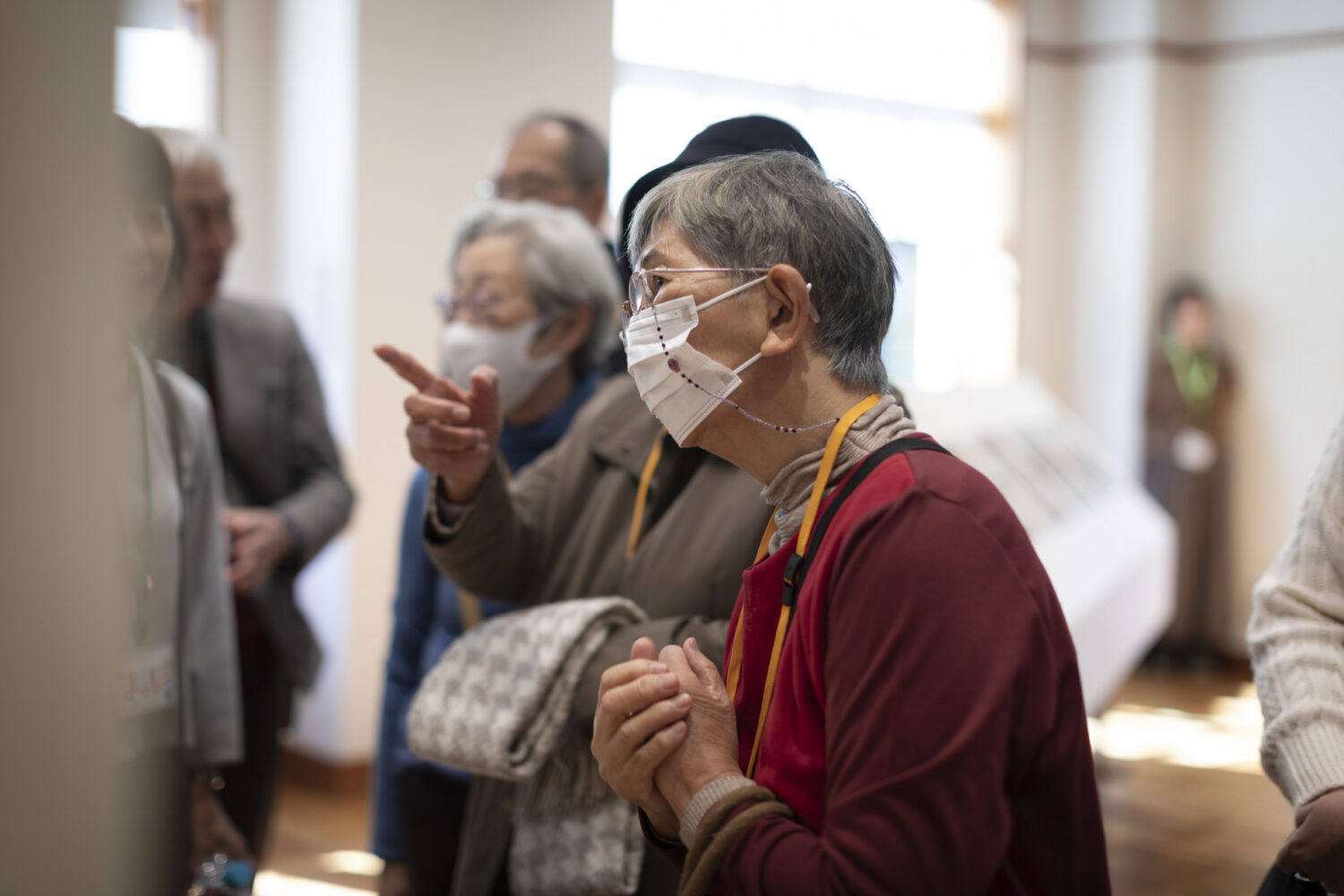
Guided by the Kotora, participants were able to ‘enter’ the photos. However, this was not solely due to the Kotora’s guidance—it was also made possible by the participants’ imagination, the technology embedded in the photo panels, and other contributing factors. Such dialogue-based appreciation can be applied to paintings, sculptures, installations, video works, and others too. It can create an occasion where people can connect, and share feelings and memories that lead to discoveries. More importantly, it opens dialogue, and that dialogue makes the appreciation of artwork into an “experience”.
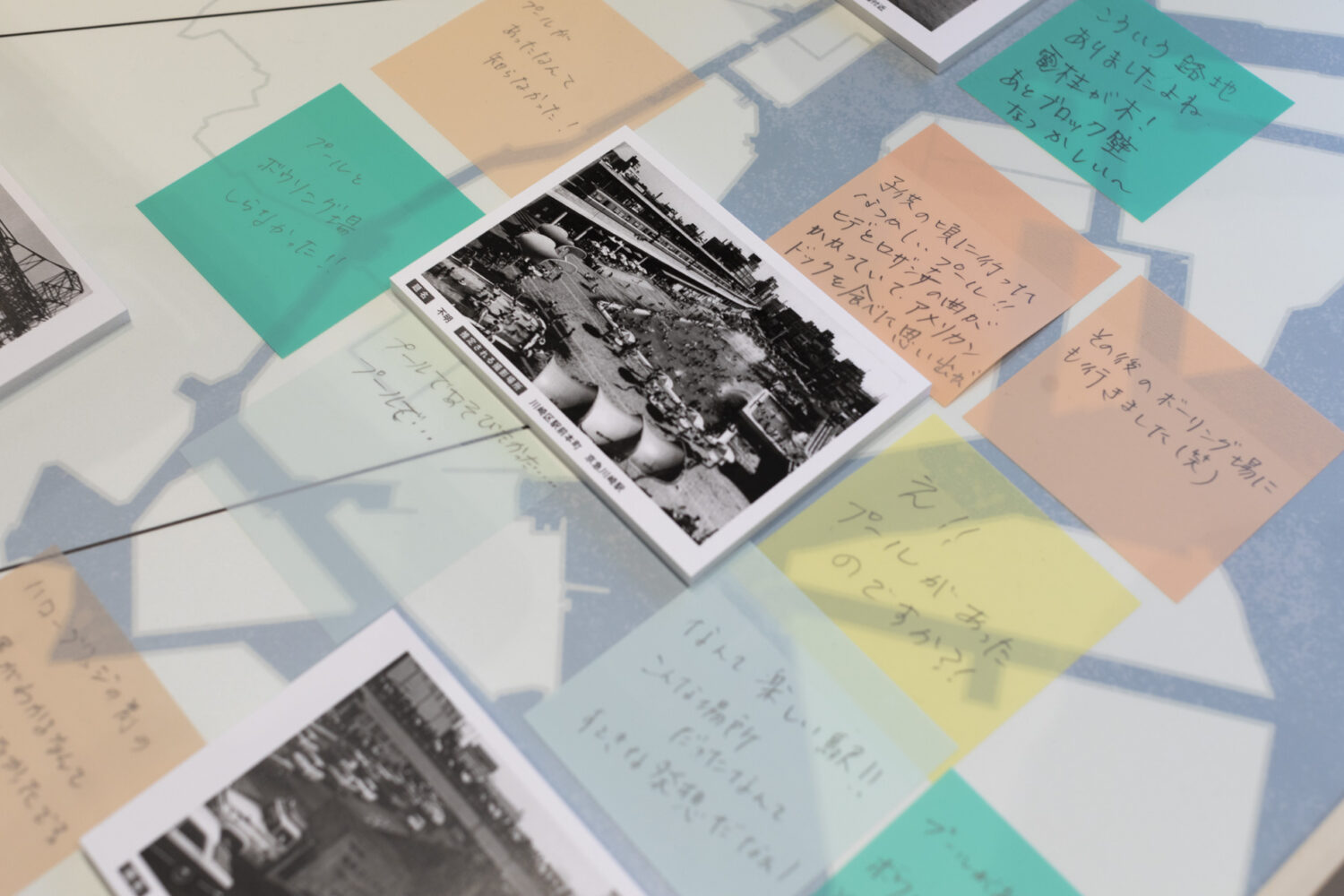
The event “KAWASAKI in Photos” became a meaningful opportunity to expand the potential of dialogue-based appreciation, allowing visitors to engage with artworks in a positive and enjoyable way. If projects like this continue to spread, we can expect art to become more deeply integrated into our daily lives. “MUSEUM TRIP: Let’s Travel in Photos!” demonstrated the future potential of photographic memories to spark new conversations and foster future connections among people.
- Kotora are communicators connecting people through arts as part of the “Koto! Koto? Kawasaki.” project. ↩︎



